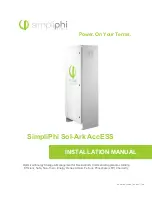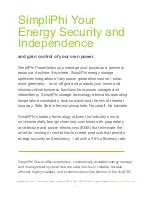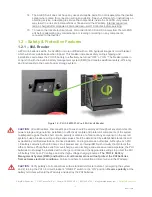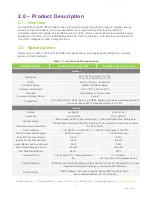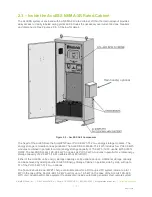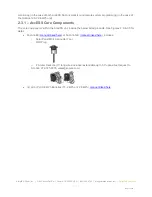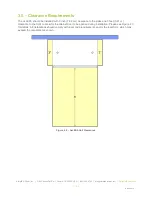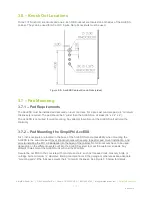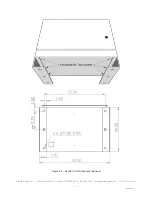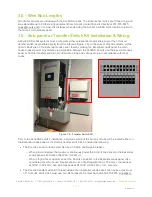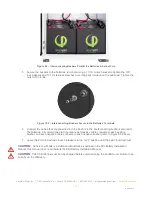
REV111819
SimpliPhi Power, Inc. | 3100 Camino Del Sol | Oxnard, CA 93030, USA | (805) 640-6700 | info@simpliphipower.com |
SimpliPhiPower.com
| 6 |
PHI batteries pose some risk of shock or sparking during the installation and initial wiring and connection
process. This is consistent with all other battery-based storage formats. Be sure to turn the built-in circuit
breaker to the “OFF” position to minimize the risk of shock or sparks during the installation and
commissioning of the system. Use of insulated gloves, clothing and footwear is always recommended
when working in close proximity to electrical devices. Cover, restrain or remove jewelry or conductive
objects (metal bracelets, rings, belt buckles, metal snaps, zippers, etc.) when working with any electrical
or mechanical device. Cover or restrain long hair and loose clothing when working with any electrical or
mechanical device.
PHI batteries do not vent any harmful gasses, and do not require special ventilation or cooling.
PHI batteries are not capable of thermal runaway. As with any battery, if the cells are severely damaged
due to physical abuse incurred outside of warranted specifications, it can cause electrolyte leakage and
other failures. The electrolyte can be ignited by an open flame. However, unlike other lithium ion batteries
(e.g. LCO, NCM, and NCA), the PHI batteries
’ electrolyte and other material components generate a
limited amount of heat.
1.2.2
– Charging at Temperatures Below Freezing
It is important to take necessary steps to determine the temperature of the PHI 3.8 battery prior to
charging the battery, as the battery may otherwise be adversely impacted.
CAUTION:
Do not attempt to charge the PHI 3.8 battery below 32
°
F (0
°
C). Although cold temperatures
do not harm PHI batteries, attempts to charge at subfreezing temperatures can adversely affect SOH and
cycle life, and will void the Warranty. If the PHI 3.8 battery must be charged below 32
°
F (0
°
C), the rate
of charge must be at no more than 5% of the PHI 3.8 b
attery’s rated capacity (C/20).
CAUTION:
Only use a SimpliPhi approved LFP charger if ancillary charging is required before installation,
testing or troubleshooting. Failure to use a SimpliPhi approved LFP charger will damage the PHI 3.8 battery
and void the Warranty.
Refer to the PHI 3.8 Manual for details regarding SimpliPhi-approved ancillary
charging equipment.
1.2.3
– Battery Management System (BMS)
The PHI 3.8 batteries within the AccESS unit are manufactured utilizing Lithium Ferrous Phosphate (LFP)
cells, which are produced under exclusive patented licensed technologies, as well as proprietary
materials, architecture, manufacturing processes and battery management system (BMS). This assures
the highest grade and quality, longest cycle-life, greatest efficiency and freedom from material impurities,
toxicity and hazardous risk.
Each PHI 3.8 battery within the AccESS unit contains circuitry that protects the Lithium Ferrous
Phosphate cells from overcharge, over-discharge and excessive load amperage. If the values specified
are exceeded, the protective circuitry will shut down the flow of electricity to/from the PHI batteries. In
some cases, this will result in the need to manually turn the batteries and inverter back on. Often, inverter
system settings will be saved within the inverter memory storage and will not need to be reset. This is not
an absolute standard but is common amongst most inverter/chargers and should be anticipated if the PHI
batteries go into a state of self-protection and shut down the flow of electricity.
CAUTION:
While the BMS and internal circuit breaker protect the PHI battery from extreme electrical
scenarios, neither will prevent the PHI battery from operating outside the recommended operating
parameters. Rely on Balance of System equipment programming to operate the battery according to
recommended parameters, as outlined in the Sol-Ark Integration Guide.

